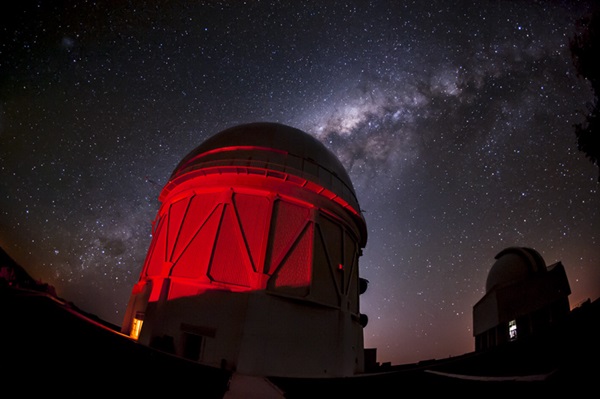Astronomers find 139 new minor planets in the outer solar system – Astronomy Magazine
The Blanco Telescope at the Cerro Tololo Inter-American Observatory in Chile houses the Dark Energy Camera, the primary tool of the Dark Energy Survey. Designed to reveal mysteries of dark energy in the universe, data from the survey could also help resolve the mystery of Planet Nine.
Reidar Hahn, Fermilab
But Gary Bernstein, astronomer at the University of Pennsylvania and co-author of the new study, has been fascinated by TNOs since “before Planet Nine was a thing” — and even before the Kuiper Belt’s existence was confirmed in the 1990s. “Whenever I’ve gotten my hands on a new camera or something that is a technological advance, I’ve gone out and tried to figure out how to look for trans-Neptunian objects with it,” Bernstein told Astronomy. “And DES, of course, is the biggest, best camera that we’ve ever had.”
DES, an international effort to understand dark energy, began observing the southern skies in 2013, using an extremely sensitive camera mounted on the Blanco 4-meter telescope in the Chilean Andes. Bernstein worked with astronomer Masao Sako and graduate student Pedro Bernardinelli, both at the University of Pennsylvania, to adapt the DES date for identifying TNOs.
“Most people, when trying to find TNOs, have a dedicated way of looking at the sky where they take images a few hours apart and you can see the objects move very easily,” Bernardinelli told Astronomy. The DES data didn’t work that way.
Bernardinelli had to design novel algorithms that could identify moving objects by connecting the dots between DES images, helping identify whether TNOs were present. The researchers then validated their movement-spotting algorithm against known TNOs and also confirmed that they could filter out fake objects.
To start with, Bernardinelli has only analyzed a small subset of the DES data. But when he applies his algorithm to the rest, he expects to find as many as 500 or more TNOs. Then, if the same method is applied to data from even more sensitive surveys on the horizon, such as by the new Vera C. Rubin Observatory, the group expects discoveries of new TNOs to number in the thousands. And with those numbers, astronomers might finally get a definitive answer to whether or not our solar system is harboring a giant planet in its distant reaches.
“It’s a fantastic example of how a survey designed for one area of astronomy — to study the expansion history of the universe — can also produce great science in a completely unrelated area,” Alexander Mustill, a theoretical astrophysicist at Lund University in Sweden, told Astronomy.
The new research was published March 10 in The Astrophysical Journal Supplement Series.
The question of Planet Nine
Batygin, who is still pursuing his hunt for Planet Nine, calls this new method for finding TNOs “a brilliant idea,” adding that the research has uncovered new objects that may have otherwise gone undiscovered for years.






